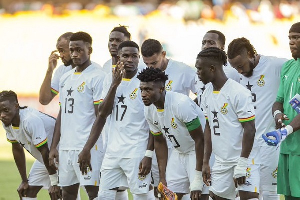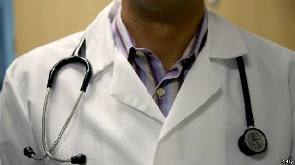There has never been a time when the need to regularly wash hands with soap under running water has highly been recommended more than now when the world is battling the COVID-19 pandemic.
Ideally, regularly washing hands with soap under running water should be a routine for all. While interacting with the environment, the hands pick pathogens, which are easily transmitted to the human system resulting in various diseases. That is why it is highly recommended to regularly wash hands with soap under running water to keep the hands clean and free of pathogens including the COVID-19.
Unfortunately, more than half of the citizenry do not have handwashing facilities on their premises to practice this hygienic aspect of life.
The 2017/2018 Multiple Indicator Cluster Survey (MICS) shows that only 48 per cent of Ghanaians have access to basic hygiene; thus have handwashing facilities on their premises with soap and water to wash their hands.
The survey also shows disparities in access to basic hygiene between urban and rural populations in the country as the percentage of urban dwellers with access to basic hygiene stands at 56, whilst that of rural dwellers stands at 42.
In the area of access to water, the 2017/2018 MICS shows that 79 per cent of Ghanaians have access to basic drinking water. This implies that over six million Ghanaians lack access to basic drinking water.
There are also disparities in access to basic drinking water between urban and rural populations in the country. The percentage of urban dwellers with access to basic drinking water stands at 93 whilst that of rural dwellers stands at 68.
Most urban dwellers enjoy piped water whilst rural dwellers take their water from manual boreholes, mechanised boreholes, wells, dams amongst other sources. However, in the national campaign to encourage regular handwashing with soap under running water in this era of COVID-19, the impression is created as though running water is only piped water as people are mostly shown washing their hands under piped water.
Other handwashing facilities have not been promoted enough for adoption by rural dwellers.
Most rural dwellers, therefore, think they cannot wash their hands with soap under running water since they do not have piped water. So, what innovations are there for such communities and households to adopt to wash their hands with soap under running water in this era of COVID-19?
Public WASH Station
A public Water, Sanitation and Hygiene (WASH) station is made up of a polytank of any size, filled with water, and placed on a stand in a public place.
At least four taps are fitted along the bottom sides of the poly tank. Soap is also placed near the taps. Bowls are placed under each tap to collect the wastewater when washing hands. Simultaneously, at least four people can wash their hands with soap under running water at a public WASH station, which reduces waiting period to wash hands.
Therefore, public WASH stations are ideal for public places such as schools, market centres, bus terminals and community centres where there are no WASH facilities.
What is required is regular supply of water to fill the poly tank including soap placed beside the taps. Due to costs, it is usually institutions or local government authorities that install public WASH stations to encourage hygiene practices in public areas.
Tippy tap
Tippy tap is a hands-free device for handwashing that is especially designed for rural communities where there is no running water.
It is operated by a foot lever and thus reduces the chance for the transmission of pathogens as the user only touches a bar of soap suspended by the hook of a string.
It is fixed by erecting two poles with a crossbar. Usually, a five litre gallon filled with water is then hanged across the crossbar and suspended by a string attached to a wood. A hole is pierced through the lid of the gallon such that when the wood on which the string is attached, is pressed down, water in the gallon is dispensed for the individual to wash hands with soap. It costs less than GHC5.00(less than a dollar) to fix a tippy tap and this makes it affordable to many households, especially those in rural communities. It is also ideal in water conservation as it is efficient in dispensing water. This is why it is even more appropriate for populations that lack access to reliable supply of water.
Veronica bucket and gallon tap
This is a bucket of any size, filled with water and placed on a stand. A tap is fitted at the bottom side of the bucket where soap is also positioned. When the tap is turned, water is dispensed to wash hands with soap. A gallon tap also functions like the veronica bucket. It has a tap at the bottom side, which is turned to dispense water for washing hands. Veronica bucket and gallon tap can be used at institutional and household levels. Low-income households may prefer gallon taps as they are affordable compared to veronica buckets.
The COVID-19 pandemic
Coronavirus emerged late last year in the central city of Wuhan in China. It spread fast and killed a number of people in the city. The World Health Organisation (WHO) christened it COVID-19 on February 11, and declared it a pandemic on March 11, because it was spreading fast to other parts of the world.
By June 14, the total confirmed cases globally surpassed 7,820,000 with over 430,000 deaths. Ghana recorded her first two confirmed cases of COVID-19 on March 12, and by June 14, the number of confirmed cases surpassed 11,400 with 51 deaths.
According to the WHO, the COVID-19 virus is primarily transmitted between people through respiratory droplets and contact. Droplet transmission occurs when a person is in close contact (within one metre) with someone, who has respiratory symptoms (coughing or sneezing) and is therefore at risk of having his/her mouth, nose or eyes exposed to potentially infective respiratory droplets. Transmission may also occur through fomites in the immediate environment around the infected person. Therefore, transmission of the COVID-19 virus can occur by direct contact with infected people and indirect contact with surfaces in the immediate environment or with objects used on the infected person.
Prevention
Some of the precautionary measures to halt the spread of COVID-19 include handwashing with soap under running water, using alcohol-based hand sanitisers, covering one’s mouth and nose with a mask or at least to flexed elbow or tissue when sneezing or coughing, and social distancing. However, regular handwashing with soap under running water is highly recommended as one of the surest ways to halt the spread of the disease, in addition to wearing a mask.
The way forward
With the community spread of COVID-19 on the rise in the country and the planned reopening of tertiary, second cycle and junior high schools this month for final year students and pupils, it is expected that such decision may lead to a further surge in the number of infections, and so the need to step up the preventive protocols against the spread of the disease is even more urgent. Therefore, government must support the private sector to come out with cheaper but durable handwashing technologies such as the aforementioned innovative facilities, which must be promoted and adopted by schools, communities and households that do not have handwashing facilities, to encourage hygiene practices across the country.
Access to clean water is crucial to ensuring hygiene practices. Therefore, as an interim measure, there is urgent need for district assemblies to contract water tanker service providers to regularly supply water to communities within their jurisdictions that lack water to help fill the handwashing facilities with clean water for hygiene practices.
The long term solution is to increase investment in the provision of water to all communities across the country. These interventions will not only strengthen the country’s fight against the COVID-19 pandemic, but also efforts at attaining the Sustainable Development Goals on WASH.
Opinions of Tuesday, 16 June 2020
Columnist: Albert Futukpor







![Former President Akufo-Addo [L] and Okatakyie Afrifa Mensah Former President Akufo-Addo [L] and Okatakyie Afrifa Mensah](https://cdn.ghanaweb.com/imagelib/pics/587/58758132.295.jpg)











